There are many things to consider when choosing what to put in front of the window in the living room. Curtains, blinds, and shades can all play a role in your home’s décor, but there are other factors to think about as well. Sun exposure, light control, and privacy are all important considerations when making your choice. In this article, we will discuss the different options available to you and help you make the best decision for your home!
What to Keep in Mind Before Starting?
Placing furniture around windows can be one of the most difficult design challenges in any home. There are so many things to consider, from the function of the window to the style of the room. And, of course, you want to make sure that your window treatments are both stylish and functional.
Consider the function of the window
Before you start placing furniture around your windows, it’s important to think about the function of the window. Is it your main light source? Or just add a bit of style to the room? Once you know what the primary function of the window is, you can start choosing the right window treatments.
Sheer curtains are a great option for living rooms and bedrooms. They allow natural light to filter into the room, while still providing some privacy. If you have a large window, you may also want to add blinds or shades to control the amount of light that comes in.
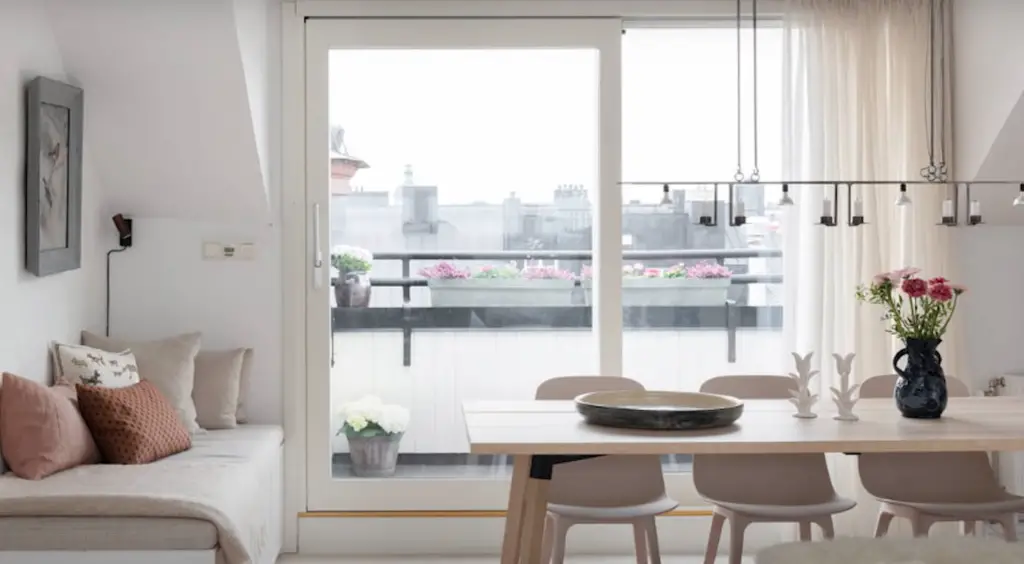
If the window is just for style, then you have more freedom with your choice of window treatments. Heavy curtains can look elegant and stylish, while still blocking out most of the light. You could also go for a more minimalist look with shutters or blinds. It’s really up to you!
Consider your room space
When you’re choosing furniture for your living room or bedroom, it’s important to consider the size of the room. How big is your living room? What is the layout? Where are the doors and windows located? Answering these questions will help you determine what kind of furniture you need and where it should go.
If you have a small living room, for example, you might want to consider using a window seat as your primary seating option. This can help create the illusion of more space and make the most of your available square footage.
In a larger living room, on the other hand, you might have more flexibility with your furniture placement. You might want to consider creating a conversation area around your window, or using a coffee table in front of your window to define the space.
It’s also important to think about traffic flow when you’re placing furniture around windows. You don’t want to block off the only exit from the room, or create a situation where people have to walk around furniture to get to the window. Instead, try to create a clear path that allows people to move freely around the room.
Finally, don’t forget about focal points! When you’re arranging furniture around windows, it’s important to consider what will be visible from outside the room. If you have a beautiful view, for example, you might want to arrange your furniture so that it can be enjoyed from both inside and outside the room.
Don’t forget about the opposing wall
Don’t just focus on decorating the wall with the window. The wall opposite the window is just as important! You’ll want to choose furniture and decorations that complement the window, but also create a balance on the opposing wall.
A large piece of art or a mirror can help balance out a small window, for example. And if you have a large window, you might want to consider using two smaller pieces of furniture on either side to create symmetry. Whatever you do, don’t forget about the other wall in the room! It’s just as important as the one with the window.
Still, placing a TV right in front of your window is never a good idea. The natural light will make it hard to see the screen, and it will also block your view of the outside. If you want to put a TV in your living room, try to find a place for it on the opposing wall.
Consider sectioning your room
If you have a large living room or bedroom, you might want to consider sectioning off the space. This can be done with furniture, area rugs, or even window treatments. Sectioning off your room can help create separate spaces for different activities. For example, you could have a conversation area near the window, and a TV area on the other side of the room.
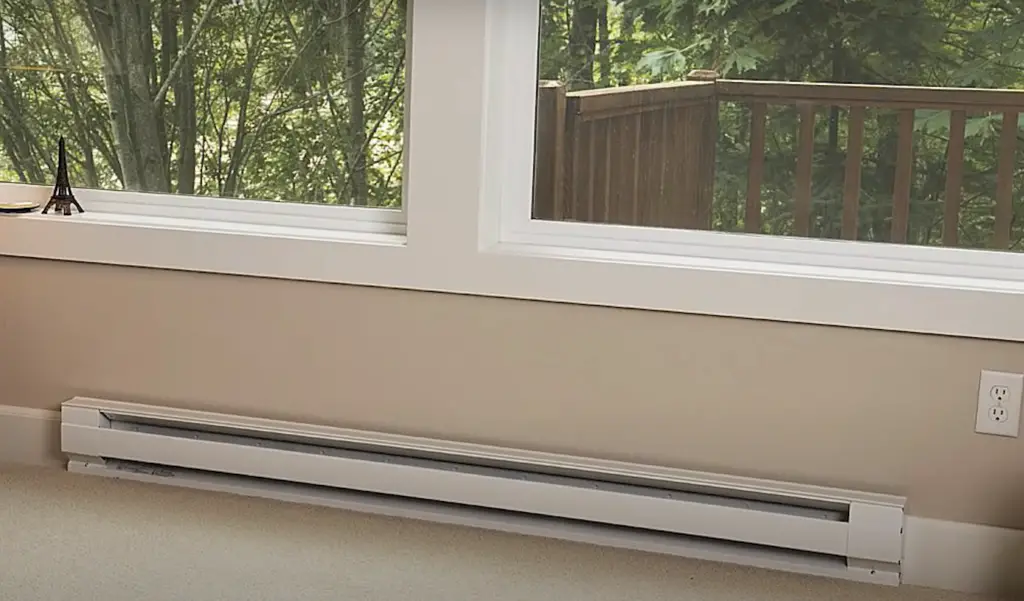
They come in all shapes and sizes, so you’re sure to find one that fits your space perfectly. If you don’t want to use a sofa, you could also try using a room divider by placing it next to your window. This can create a separate space for reading, relaxing, or even working from home.
Window treatments can also be used to section off a room. For example, you could use curtains to define the boundaries of your conversation area. Sectioning off your room can help maximize space and make your home feel more cohesive. It’s a great way to make the most of your available square footage!
Utilize vertical space
If you’re struggling to find enough space for all your furniture, don’t forget to look up! Utilizing vertical space can help you make the most of a small room.
One way to do this is to hang a chandelier or pendant light in front of your window. This will not only add a touch of elegance to your space, but it will also free up floor space. You could also try hanging shelves or plants on the wall above your window. This can help draw the eye upward and make the most of empty wall space.
Another great way to utilize vertical space is to use tall, slender pieces of furniture. A tall bookshelf or floor lamp can help add both style and function to a small room. Just be sure not to overcrowd the space!
Avoid placing furniture or decor that completely block the window
One of the most common mistakes people make is placing furniture or decor that completely blocks the window. Not only does this make the room feel smaller, but it also means that you’re not making full use of your light source. If possible, try to arrange your furniture so that it doesn’t block the window. For example, you could place a sofa in front of the window, with a coffee table and chairs off to the side. Or, if you have a large bay window, you could put a daybed or bench in front of it.[1],[2]
Pick a Curtain Design That Fits Aesthetics of Your Room
Probably the most important factor when it comes to choosing what to put in front of your living room window is the design of the curtain. Depending on the style of your home, you will want to pick a design that either fits or compliments the aesthetic. For example, if your home has a more rustic appeal, you might want to choose curtains with a plaid or country pattern. If your home is more modern, sleek lines and solid colors might be a better option. There are endless possibilities when it comes to curtain design, so take some time to browse through different options until you find something that feels right for your space.
Another important factor to consider when picking out curtains is the material. As we already mentioned, different materials can offer different levels of privacy and light control. For example, sheer curtains are perfect for letting in natural light, but they might not provide the privacy you’re looking for. On the other hand, blackout curtains can help create a dark and cozy space, but they might make your room feel a bit too closed off. It’s important to find a balance that works for you and your space.
Decorate the Area With Indoor Plants
One of the best ways to spruce up any space is by adding some indoor plants. Not only do they look great, but they can also help purify the air in your home. If you’re not sure where to start, succulents are always a good option because they’re relatively low maintenance. Once you have your plants picked out, experiment with different pot designs until you find something that fits your style. You can even get creative and repurpose items you already have around the house, like old mason jars or coffee cans.
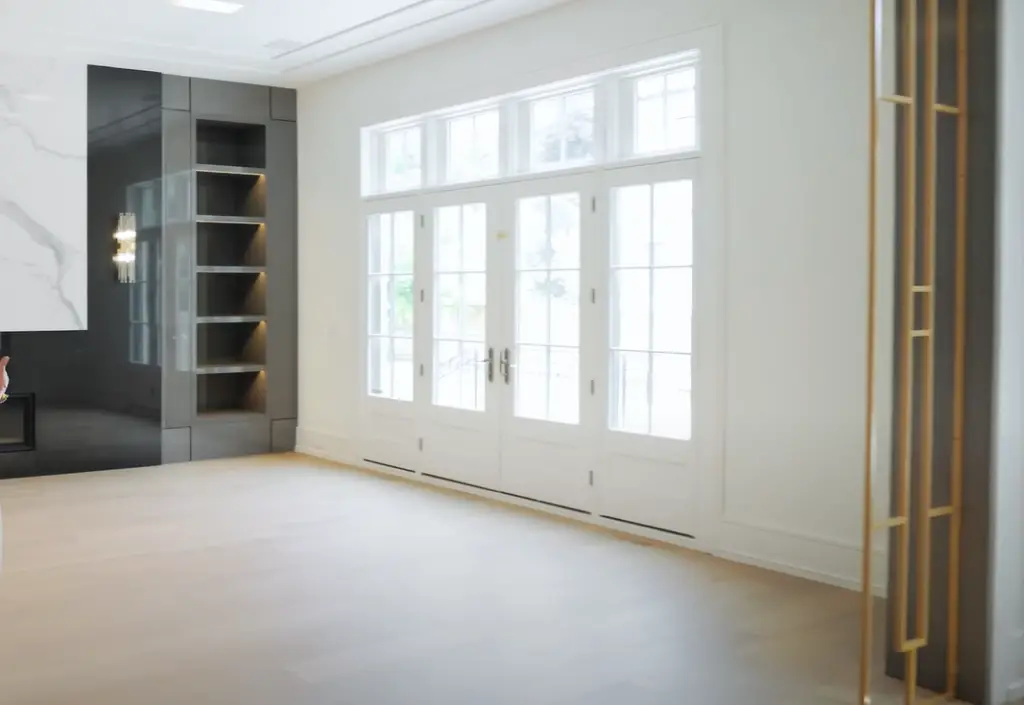
You can either hang your plants or place them on a shelf in front of your window. If you go with the latter, make sure to arrange them in odd numbers for a more visually appealing look. Once you have your plants in place, sit back and enjoy your new living room oasis.
Place a Desk in Front of It
If you work from home or simply enjoy spending time in your living room, placing a desk in front of your window is a great way to make the most of the space. You’ll get to enjoy all the natural light while still being able to stay productive. This is a great option if you work from home or need a space to get some paperwork done. Plus, it’s a great spot for people watching if that’s something you’re into. Make sure to choose a desk with a light color so it doesn’t absorb all the sunlight and make the space feel too dark. [2],[4]
Place a Low Sofa in Front of It
If you’re looking for a more relaxed feel, placing a low sofa in front of your window is the way to go. Not only will it create a focal point, but it will also provide a comfortable spot to relax and enjoy the view.
This is a great option if you don’t have a lot of space because it won’t block any natural light coming in. Plus, it’s the perfect spot for taking a nap or reading a book on lazy Sundays. Just make sure to choose a sofa that’s comfortable and matches the overall aesthetic of your living room.
Chaise lounge for example will look great in more classical living rooms while a daybed would be a better option for a bohemian space.
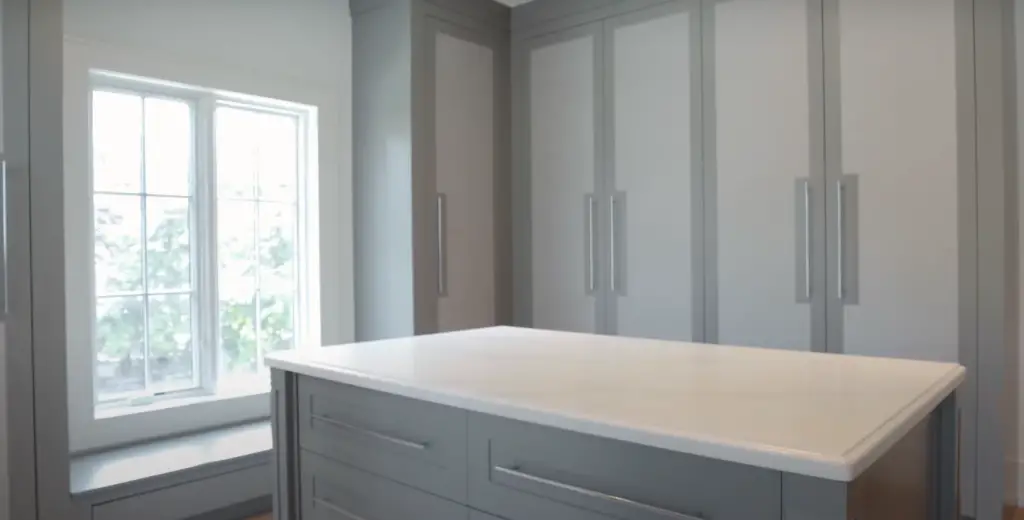
Again, be careful to not cover up too much of the window because you still want to be able to enjoy the natural light.[2],[3],[4]
Create a Breakfast Area
If you have the space in front of your window, why not turn it into a breakfast area? This is a great way to make use of the natural light that comes in. And it’s a perfect spot for enjoying a cup of coffee or tea in the morning while reading the news. All you need is a small table and chairs. You can even add some plants to create a more relaxing atmosphere.
Breakfast areas are also great for entertaining guests. If you have friends or family over, they can sit at the table and enjoy their meal while you chat with them. It’s the perfect way to spend time with loved ones.[2]
Place a Low Bookshelf or Cabinet in Front of the Window
If you’re looking for a way to add some extra storage to your living room without taking up too much space, placing a low bookcase or cabinet in front of the window is a great option. This will create a cozy reading nook while still giving you somewhere to store books, magazines, and other knick-knacks. Just make sure not to block any vents or air intakes with your furniture!
This is a great spot for curling up with a good book or taking a nap on lazy Sundays. Plus, it’s the perfect place to enjoy the natural light coming in from your window. Just make sure to choose a comfortable chair that you can easily sink into.
Decorate the Opposing Wall With Artwork or Mirrors
Besides focusing on what to put in front of the window in the living room, don’t forget about the wall opposite of it. This is a great opportunity to add some artwork or mirrors. If you go with artwork, try to pick pieces that complement the overall aesthetic of your room. For example, if your style is more rustic, look for paintings or photographs with nature scenes. If you have a modern home, abstract pieces might be a better option.
Instead of just placing one picture in the center of the wall, try grouping several together for a more interesting look. You can also experiment with different frame styles and sizes to create a unique arrangement. If you decide to go with mirrors, you can either hang them or lean them against the wall. Again, try to mix and match different sizes and shapes for a more visually appealing display.
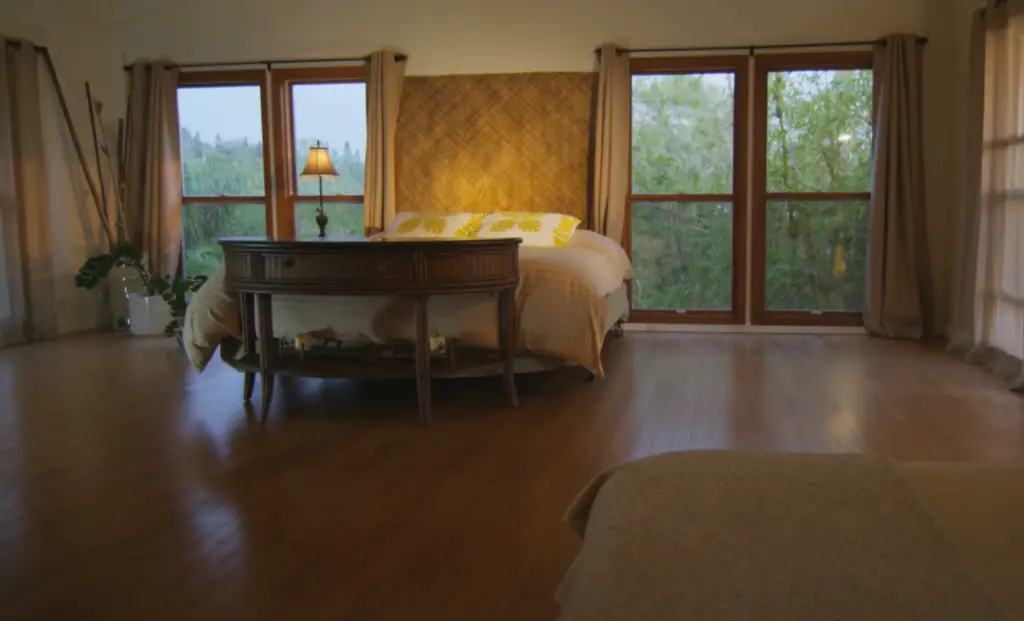
Mirrors are a great way to make a small room look bigger. They reflect light and give the illusion of more space. Plus, they can be used as decorative pieces in their own right. [1],[3]
Comparison of Options for Placement in Front of Window in the Living Room
This table presents a comparison of various options for placement in front of the window in the living room. Choosing the right object to put in front of a window can enhance the overall aesthetic appeal of the room while also serving functional purposes. The table provides numerical data in the imperial system to help you make an informed decision about what to place in front of your living room window.
| Option | Height (inches) | Width (inches) | Depth (inches) | Material | Price Range ($) |
|---|---|---|---|---|---|
| Console Table | 30 | 48 | 16 | Wood | 100-500 |
| Plant Stand | 36 | 12 | 12 | Metal | 50-200 |
| Bench | 18 | 36 | 14 | Upholstered | 150-400 |
| Window Seat | 20 | 48 | 18 | Fabric | 200-600 |
| Bookshelf | 72 | 36 | 12 | Wood | 300-800 |
The table includes several key indicators to consider when choosing what to put in front of a window in the living room. Here’s what each column represents:
- Option: This column lists the different options available for placement in front of the window, such as a console table, plant stand, bench, window seat, or bookshelf.
- Height (inches): This column specifies the height of each option in inches, indicating how tall the object will be in front of the window.
- Width (inches): This column provides the width of each option in inches, indicating the horizontal space the object will occupy in front of the window.
- Depth (inches): This column indicates the depth of each option in inches, representing the distance from the window to the farthest point of the object.
- Material: This column describes the material composition of each option, which may include wood, metal, fabric, or upholstery.
- Price Range ($): This column provides a rough estimate of the price range for each option, giving you an idea of the potential cost involved in acquiring the respective item.
By considering these indicators, you can compare the options and choose the most suitable object to enhance the aesthetic appeal and functionality of your living room while optimizing the use of the space in front of the window.
FAQ
Can you put a bookshelf in front of a window?
A bookshelf is a great option if you’re looking for something to put in front of a window in your living room. Not only will it provide you with extra storage space, but it can also act as a decorative element in your home. Just be sure to measure the shelf before you buy it so that it fits perfectly in front of your window.
Is it OK to put furniture in front of a window?
It is perfectly fine to put furniture in front of a window. In fact, it can add a nice touch to your living room. However, you should make sure that the furniture does not block the sunlight from coming into the room.
Another thing to consider is the type of furniture you put in front of the window. For example, if you have a large couch, it might be best to put a small table or chair in front of it. This will help to create more space in the room and allow for more light to come in.
Is it weird to put a TV in front of a window?
It’s not weird to put a TV in front of a window, but there are a few things you should keep in mind. First, the glare from the sun can be tough on your eyes, so you’ll want to make sure you have blinds or curtains that can help filter out the light. Second, if your TV is in front of a window, it might be harder to hear the audio coming from the TV because of all the outside noise. All this combined means placing a TV in front of your window isn’t recommended.
What are some decorative options for placing in front of a window in the living room?
There are several decorative options you can consider for placing in front of a window in the living room. Some popular choices include:
- Potted plants or indoor trees: Adding greenery can bring a refreshing touch to the space while allowing natural light to filter through the leaves.
- A decorative room divider: This can create a visually appealing separation between the window and the rest of the room, adding privacy and style.
- A window bench or seat: Placing a comfortable seating option in front of the window can create a cozy reading nook or provide extra seating space.
- An art display: Hanging artwork or placing sculptures in front of the window can add visual interest and serve as a focal point in the living room.
Can I place a curtain or blinds in front of a window in the living room?
Yes, curtains or blinds are commonly used in front of windows in living rooms. They serve both functional and aesthetic purposes. Curtains can add texture, color, and style to the room while also providing privacy and light control. Blinds offer a more contemporary and minimalist look, allowing you to adjust the amount of light entering the space. When choosing curtains or blinds, consider the overall decor and style of your living room.
Are there any furniture arrangements that work well in front of a window in the living room?
A few furniture arrangements can work well in front of a window in the living room, depending on the size and layout of the space:
- A small accent table with a decorative lamp: This can create a cozy and functional reading or relaxation area near the window.
- A low-profile console table or cabinet: Placing furniture with a lower height in front of the window allows for natural light to still enter the room while providing a surface for displaying decor.
- A window seat or bench with storage: This option not only offers a comfortable seating area but also maximizes the use of space by providing storage beneath the seat.
How can I make the most of natural light when placing furniture in front of a window?
When placing furniture in front of a window, you can take steps to maximize the natural light in your living room:
- Choose low-profile furniture: Opt for furniture with a lower height or open design that doesn’t obstruct the window too much.
- Use sheer or lightweight curtains: If you prefer to have curtains, select sheer or lightweight fabrics that allow light to pass through while still providing privacy.
- Avoid bulky or oversized furniture: Large and bulky furniture pieces can block natural light from entering the room, so it’s best to choose smaller-scale furniture that leaves space around the window.
- Strategically position mirrors: Placing mirrors near the window can help reflect and amplify the natural light, making the room appear brighter and more spacious.
What are some alternative options for utilizing the space in front of a window in the living room?
If you prefer not to place furniture directly in front of a window, there are alternative options for utilizing the space:
- Create a reading nook: Set up a cozy reading area with a comfortable chair, floor lamp, and a small side table next to the window.
- Add a window shelf: Install a shelf below the window to display plants, books, or decorative items, creating an attractive focal point.
- Design a window display: Arrange a collection of decorative items, such as vases, candles, or small sculptures, on a windowsill to showcase your personal style.
- Install window seating: Build a window seat with storage underneath to make the most of the space while providing additional seating and storage options.
Useful Video: HANGING CURTAINS? DON’T MAKE THESE 5 TERRIBLE MISTAKES!
Conclusion
Decorating an area near the window in your living room might seem daunting at first. However, with a little planning and creativity, you can turn it into a cozy and inviting space. Just remember to take into account the natural light, the furniture you already have, and your overall style when choosing what to put in front of your window.
Once you’ve decided what to put in front of your living room window, all that’s left to do is enjoy your new space. Make sure to take some time to experiment with different arrangements until you find something that works for you and your home. Thanks for reading!
References:
- https://melissavickersdesign.com/blogs/interior-design/what-to-put-in-front-of-window-in-living-room
- https://homedecorbliss.com/furniture-items-to-put-in-front-of-window/
- https://homedecorbliss.com/what-to-put-in-front-of-window-in-living-room/
- https://decoholic.org/the-best-living-room-decorating-ideas-under-windows/





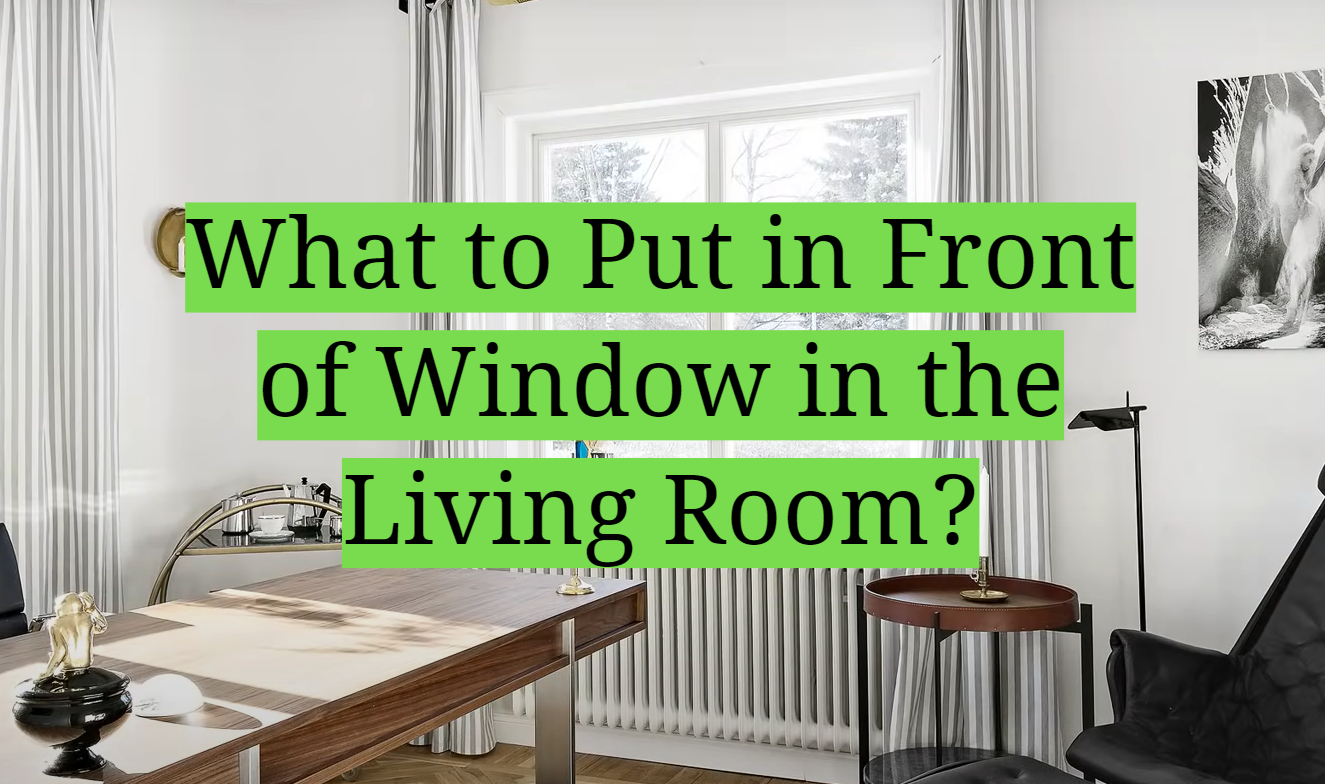




Leave a Reply